2017 has not marked the death of Locky ransomware. Article, designed to help you remove the Locky ransomware virus infection and try to decrypt files encrypted with the .locky file extension appended to them. Locky virus has come out in many iterations and many variations of it are still using the .locky extensions embedded on files encrypted by the virus. The ransomware in question is Locky, and it sets an extension with the same name to the victim’s encrypted files. Files that Locky targets for encryption are mainly documents. To remove the ransomware and see how you can try to restore your files, you should carefully read the article.

Threat Summary
| Name | Locky Ransomware |
| Type | Ransomware |
| Short Description | The ransomware encrypts files with the RSA algorithm and AES-128 ciphers and asks a ransom for decryption. |
| Symptoms | Files are encrypted and become inaccessible. A ransom note with instructions for paying the ransom shows as a .txt file. |
| Distribution Method | Spam Emails, Email Attachments, File Sharing Networks. |
| Detection Tool |
See If Your System Has Been Affected by malware
Download
Malware Removal Tool
|
| User Experience | Join our forum to Discuss Locky Ransomware. |
| Data Recovery Tool | Windows Data Recovery by Stellar Phoenix Notice! This product scans your drive sectors to recover lost files and it may not recover 100% of the encrypted files, but only few of them, depending on the situation and whether or not you have reformatted your drive. |

Locky Ransomware – Update August 2017
Locky has reappeared in the past month, but wasn’t running for all Windows versions and its spam campaign was hindered shortly after. That only means that there is bound to be a comeback for the notorious cryptovirus and it might happen during the month of August, 2017. At the moment there are no reports from victims or malware researchers trying to find new samples of the ransomware, but that surely could be the calm before the storm.

Locky Ransomware – Update July 2017
Locky ransomware continues to infect users worldwide, and is also one of cybercriminals’ most preferred ransomware pieces when it comes to creating copycats. Jaff ransomware appeared last month and is still active as evident by the statistics and users’ complaints over tech support forums.
In factm Jaff mimics Locky ransomware in more than one way, including the payment page design, the way it distributes its infection payload, etc. Similarly to Locky and other ransomware families, Jaff ransomware might also be spreading its payload file via social media and file-sharing networks. Learn more about Jaff.

Locky Ransomware – Update May 2017
Locky ransomware keeps spreading and infecting new users even up to this day, but mainly distributes newer variants. The latest of them all is the Locky’s .Loptr File Extension Virus variant which is spreading with malspam campaigns delivering document files embedded inside PDF files. The document files contain hidden macro commands which download the virus from a domain and afterward infect the computer system they were activated on. This clever obfuscation tactic is applied to try and prevent security programs from detecting the threat. As that method of delivering the virus to a computer requires social engineering, experts advise you to not open emails, nor their attachments if you are not certain of their origin.

Locky Ransomware – Spread
Locky ransomware spreads in several ways. One is through spam emails having a malicious file attached. Opening the attachment automatically gets malware inside your computer. The malicious code may also hide inside the body of the email. So, only opening such emails is enough to get you infected, even without getting to the attachment part.
Learn More about Locky’s Spam Email Campaigns
Other ways this virus can spread are via file sharing services and social networks, which may contain similar attachments and files with the Locky ransomware inside. These files might be presented to you as useful or something needed, like an update. Visiting untrusted websites and clicking on links with redirects could also lead to this malware infection.

Locky Ransomware – Information
Locky is classified by researchers as ransomware.
If your computer is infected with it, the ransomware might create new values in the Windows Registry to improve its persistence. That includes an automatic start with every boot of Windows. The modifications are usually made in these registry entries:
HKLM/Software/Microsoft/Windows/CurrentVersion/Run/
and
HKLM/Software/Microsoft/WindowsNT/CurrentVersion/Winlogon/Shell
It has already been included in several security programs’ definitions and detected by them as shown in the VirusTotal site:
Afterward, the ransomware will create at least one file called _Locky_recover_instructions.txt, which contains the ransom note with instructions on how to pay the ransom. It states the following:
!!! IMPORTANT INFORMATION !!!!
All of your files are encrypted with RSA-2048 and AES-128 ciphers.
More information about the RSA and AES can be found here:
https://en.wikipedia.org/wiki/RSA_(cryptosystem)
https://en.wikipedia.org/wiki/Advanced_Encryption_StandardDecrypting of your files is only possible with the private key and decrypt program, All which is on our secret server.
To receive your private key follow one of the links:
1. hxxp: //6dtxgqam4crv6rr6.tor2web(.)org/[mixed letters and numbers] 2. hxxp: //6dtxgqam4crv6rr6.onion(.)to/[mixed letters and numbers] 3. hxxp: //6dtxgqam4crv6rr6.onion(.)cab/[mixed letters and numbers] 4. hxxp: //6dtxgqam4crv6rr6.onion(.)link/[mixed letters and numbers]If all of this addresses are not available, follow synthesis steps:
1. Download and install Tor Browser: https://www.torproject.org/download/download-easy(.)html
2. After a successful installation, run the browser and wait for initialization.
3. Type in the address bar: 6dtxgqam4crv6rr6(.)onion / [mixed letters and numbers] 4. Follow the instructions on the site.!!! Your personal identification ID: [mixed letters and numbers] !!!
Users of Reddit clicked on one of the links inside this ransom note, and have provided an image of what the payment website looks like:
Image Source: Reddit
On that website, there is an alleged Locky Decrypter program and a promise that your files will be decrypted if you pay. Contacting the ransomware makers to pay for the ransom is strongly NOT advised. There is no guarantee your files are going to be decrypted with the above-mentioned decrypter software. Also, paying ransomware creators is like an equivalent of supporting them to make an even worse version of the malware and a tougher encryption.
The Locky ransomware is known to search for and encrypt document and text files. The files that it could encrypt have the following extensions:
→ .doc, .docm, .log, .pap, .info, .gdoc, .asp, .jsp, .json, .xhtml, .txt, .xls, .xlsx, .xml, .docx, .html, .js, .mdb, .odt, .asc, .conf, .msg, .rtf, .cfg, .cnf, .pdf, .php, .ppt, .pptx, .sql
This is not a full list as there could be other file extensions that the ransomware searches for encryption. After encryption, files have the extension .locky. The encryption algorithm of the ransomware, according to its own ransom note is RSA mixed with AES-128 ciphers. This makes a very strong encryption.
Learn More about AES-128 Encryption
The Locky ransomware is known to encrypt file locations which usually contain documents, such as:
- C:\Users\[UserName]\Documents
- Desktop\MyDocs\Downloads
- C:\Documents and Settings\Users\My Documents
For now, it is not known if Shadow Volume Copies are erased from the Windows operating system, but it is likely. So, after removing the ransomware, you should check the third section of the instructions written below for a few ways which can help you try to restore your files.

Remove Locky Ransomware and Restore .locky Encrypted Files
If you have been infected by Locky, you should have a bit of experience in removing malware. This ransomware could lock your files irreparably, so it is highly recommended that you act fast and follow the step-by-step instructions provided down here.
- Step 1
- Step 2
- Step 3
- Step 4
- Step 5
Step 1: Scan for Locky Ransomware with SpyHunter Anti-Malware Tool



Ransomware Automatic Removal - Video Guide
Step 2: Uninstall Locky Ransomware and related malware from Windows
Here is a method in few easy steps that should be able to uninstall most programs. No matter if you are using Windows 10, 8, 7, Vista or XP, those steps will get the job done. Dragging the program or its folder to the recycle bin can be a very bad decision. If you do that, bits and pieces of the program are left behind, and that can lead to unstable work of your PC, errors with the file type associations and other unpleasant activities. The proper way to get a program off your computer is to Uninstall it. To do that:


 Follow the instructions above and you will successfully delete most unwanted and malicious programs.
Follow the instructions above and you will successfully delete most unwanted and malicious programs.
Step 3: Clean any registries, created by Locky Ransomware on your computer.
The usually targeted registries of Windows machines are the following:
- HKEY_LOCAL_MACHINE\Software\Microsoft\Windows\CurrentVersion\Run
- HKEY_CURRENT_USER\Software\Microsoft\Windows\CurrentVersion\Run
- HKEY_LOCAL_MACHINE\Software\Microsoft\Windows\CurrentVersion\RunOnce
- HKEY_CURRENT_USER\Software\Microsoft\Windows\CurrentVersion\RunOnce
You can access them by opening the Windows registry editor and deleting any values, created by Locky Ransomware there. This can happen by following the steps underneath:


 Tip: To find a virus-created value, you can right-click on it and click "Modify" to see which file it is set to run. If this is the virus file location, remove the value.
Tip: To find a virus-created value, you can right-click on it and click "Modify" to see which file it is set to run. If this is the virus file location, remove the value.
Before starting "Step 4", please boot back into Normal mode, in case you are currently in Safe Mode.
This will enable you to install and use SpyHunter 5 successfully.
Step 4: Boot Your PC In Safe Mode to isolate and remove Locky Ransomware





Step 5: Try to Restore Files Encrypted by Locky Ransomware.
Method 1: Use STOP Decrypter by Emsisoft.
Not all variants of this ransomware can be decrypted for free, but we have added the decryptor used by researchers that is often updated with the variants which become eventually decrypted. You can try and decrypt your files using the instructions below, but if they do not work, then unfortunately your variant of the ransomware virus is not decryptable.
Follow the instructions below to use the Emsisoft decrypter and decrypt your files for free. You can download the Emsisoft decryption tool linked here and then follow the steps provided below:
1 Right-click on the decrypter and click on Run as Administrator as shown below:

2. Agree with the license terms:
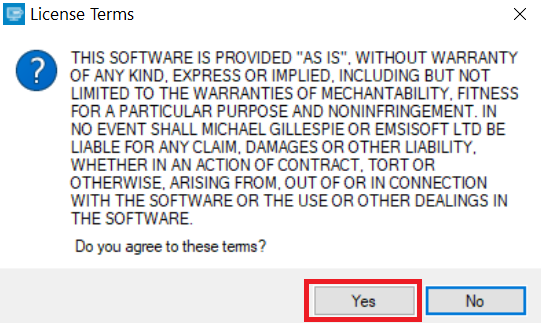
3. Click on "Add Folder" and then add the folders where you want files decrypted as shown underneath:
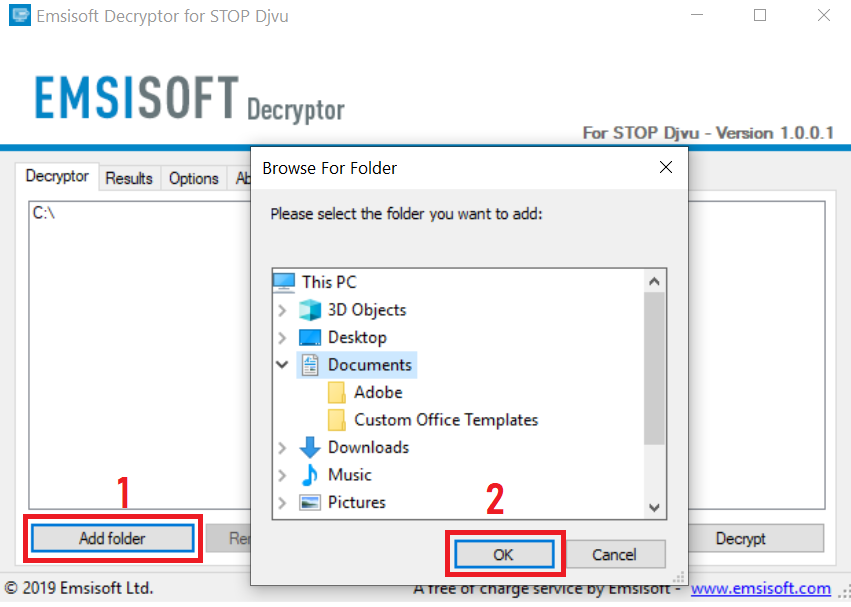
4. Click on "Decrypt" and wait for your files to be decoded.
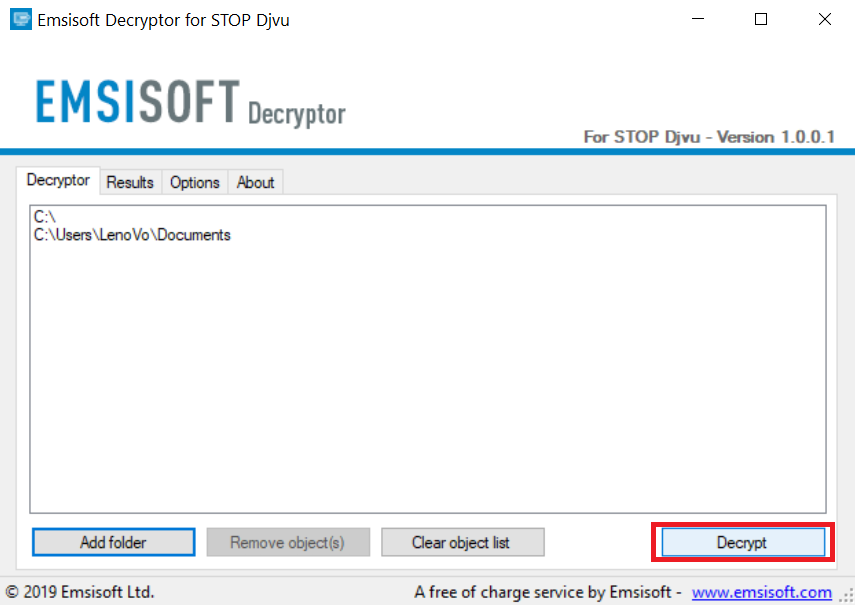
Note: Credit for the decryptor goes to Emsisoft researchers who have made the breakthrough with this virus.
Method 2: Use data recovery software
Ransomware infections and Locky Ransomware aim to encrypt your files using an encryption algorithm which may be very difficult to decrypt. This is why we have suggested a data recovery method that may help you go around direct decryption and try to restore your files. Bear in mind that this method may not be 100% effective but may also help you a little or a lot in different situations.
Simply click on the link and on the website menus on the top, choose Data Recovery - Data Recovery Wizard for Windows or Mac (depending on your OS), and then download and run the tool.
Locky Ransomware-FAQ
What is Locky Ransomware Ransomware?
Locky Ransomware is a ransomware infection - the malicious software that enters your computer silently and blocks either access to the computer itself or encrypt your files.
Many ransomware viruses use sophisticated encryption algorithms to make your files inaccessible. The goal of ransomware infections is to demand that you pay a ransom payment to get access to your files back.
What Does Locky Ransomware Ransomware Do?
Ransomware in general is a malicious software that is designed to block access to your computer or files until a ransom is paid.
Ransomware viruses can also damage your system, corrupt data and delete files, resulting in the permanent loss of important files.
How Does Locky Ransomware Infect?
Via several ways.Locky Ransomware Ransomware infects computers by being sent via phishing emails, containing virus attachment. This attachment is usually masked as an important document, like an invoice, bank document or even a plane ticket and it looks very convincing to users.
Another way you may become a victim of Locky Ransomware is if you download a fake installer, crack or patch from a low reputation website or if you click on a virus link. Many users report getting a ransomware infection by downloading torrents.
How to Open .Locky Ransomware files?
You can't without a decryptor. At this point, the .Locky Ransomware files are encrypted. You can only open them once they are decrypted using a specific decryption key for the particular algorithm.
What to Do If a Decryptor Does Not Work?
Do not panic, and backup the files. If a decryptor did not decrypt your .Locky Ransomware files successfully, then do not despair, because this virus is still new.
Can I Restore ".Locky Ransomware" Files?
Yes, sometimes files can be restored. We have suggested several file recovery methods that could work if you want to restore .Locky Ransomware files.
These methods are in no way 100% guaranteed that you will be able to get your files back. But if you have a backup, your chances of success are much greater.
How To Get Rid of Locky Ransomware Virus?
The safest way and the most efficient one for the removal of this ransomware infection is the use a professional anti-malware program.
It will scan for and locate Locky Ransomware ransomware and then remove it without causing any additional harm to your important .Locky Ransomware files.
Can I Report Ransomware to Authorities?
In case your computer got infected with a ransomware infection, you can report it to the local Police departments. It can help authorities worldwide track and determine the perpetrators behind the virus that has infected your computer.
Below, we have prepared a list with government websites, where you can file a report in case you are a victim of a cybercrime:
Cyber-security authorities, responsible for handling ransomware attack reports in different regions all over the world:
Germany - Offizielles Portal der deutschen Polizei
United States - IC3 Internet Crime Complaint Centre
United Kingdom - Action Fraud Police
France - Ministère de l'Intérieur
Italy - Polizia Di Stato
Spain - Policía Nacional
Netherlands - Politie
Poland - Policja
Portugal - Polícia Judiciária
Greece - Cyber Crime Unit (Hellenic Police)
India - Mumbai Police - CyberCrime Investigation Cell
Australia - Australian High Tech Crime Center
Reports may be responded to in different timeframes, depending on your local authorities.
Can You Stop Ransomware from Encrypting Your Files?
Yes, you can prevent ransomware. The best way to do this is to ensure your computer system is updated with the latest security patches, use a reputable anti-malware program and firewall, backup your important files frequently, and avoid clicking on malicious links or downloading unknown files.
Can Locky Ransomware Ransomware Steal Your Data?
Yes, in most cases ransomware will steal your information. It is a form of malware that steals data from a user's computer, encrypts it, and then demands a ransom in order to decrypt it.
In many cases, the malware authors or attackers will threaten to delete the data or publish it online unless the ransom is paid.
Can Ransomware Infect WiFi?
Yes, ransomware can infect WiFi networks, as malicious actors can use it to gain control of the network, steal confidential data, and lock out users. If a ransomware attack is successful, it could lead to a loss of service and/or data, and in some cases, financial losses.
Should I Pay Ransomware?
No, you should not pay ransomware extortionists. Paying them only encourages criminals and does not guarantee that the files or data will be restored. The better approach is to have a secure backup of important data and be vigilant about security in the first place.
What Happens If I Don't Pay Ransom?
If you don't pay the ransom, the hackers may still have access to your computer, data, or files and may continue to threaten to expose or delete them, or even use them to commit cybercrimes. In some cases, they may even continue to demand additional ransom payments.
Can a Ransomware Attack Be Detected?
Yes, ransomware can be detected. Anti-malware software and other advanced security tools can detect ransomware and alert the user when it is present on a machine.
It is important to stay up-to-date on the latest security measures and to keep security software updated to ensure ransomware can be detected and prevented.
Do Ransomware Criminals Get Caught?
Yes, ransomware criminals do get caught. Law enforcement agencies, such as the FBI, Interpol and others have been successful in tracking down and prosecuting ransomware criminals in the US and other countries. As ransomware threats continue to increase, so does the enforcement activity.
About the Locky Ransomware Research
The content we publish on SensorsTechForum.com, this Locky Ransomware how-to removal guide included, is the outcome of extensive research, hard work and our team’s devotion to help you remove the specific malware and restore your encrypted files.
How did we conduct the research on this ransomware?
Our research is based on an independent investigation. We are in contact with independent security researchers, and as such, we receive daily updates on the latest malware and ransomware definitions.
Furthermore, the research behind the Locky Ransomware ransomware threat is backed with VirusTotal and the NoMoreRansom project.
To better understand the ransomware threat, please refer to the following articles which provide knowledgeable details.
As a site that has been dedicated to providing free removal instructions for ransomware and malware since 2014, SensorsTechForum’s recommendation is to only pay attention to trustworthy sources.
How to recognize trustworthy sources:
- Always check "About Us" web page.
- Profile of the content creator.
- Make sure that real people are behind the site and not fake names and profiles.
- Verify Facebook, LinkedIn and Twitter personal profiles.














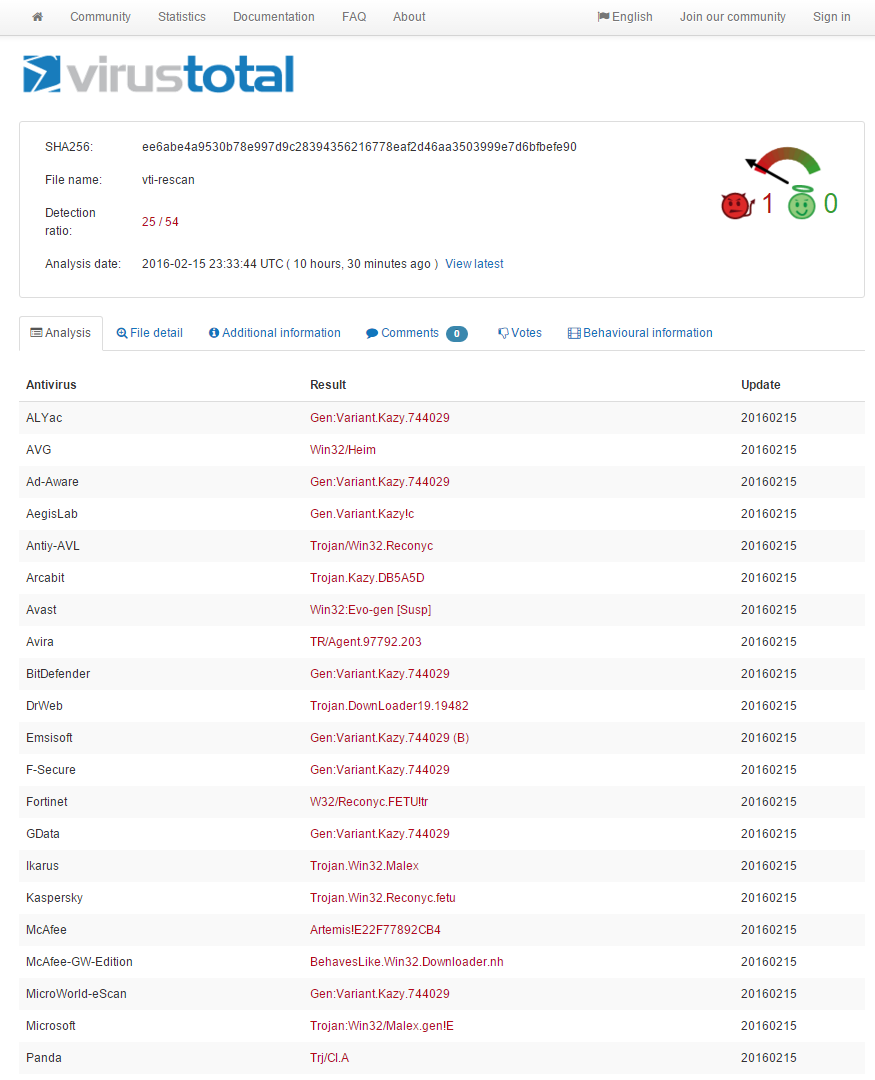
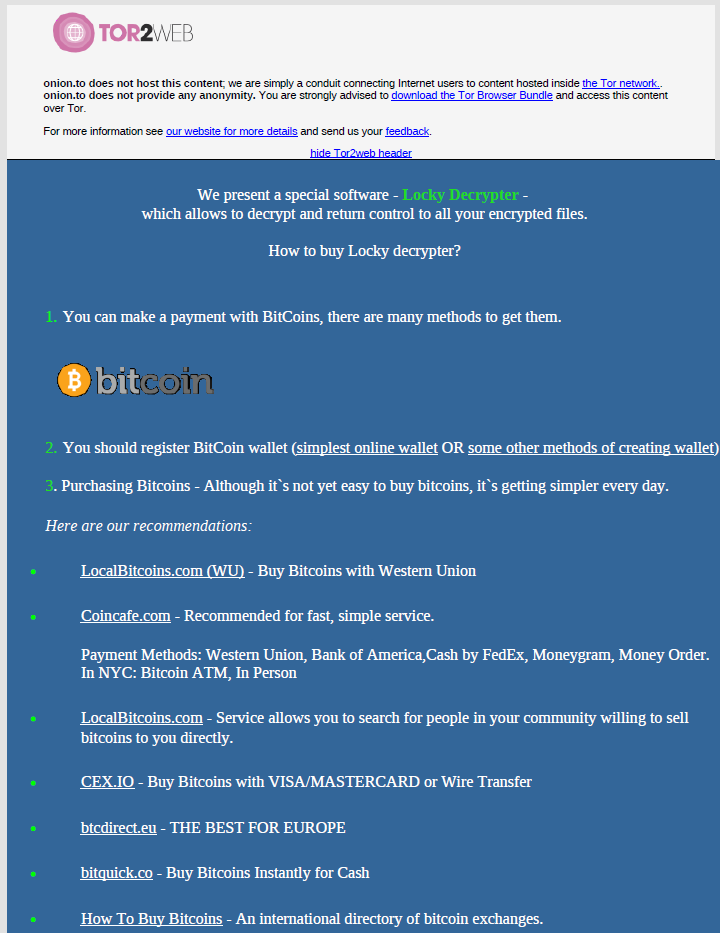
Thanks for the info. Just one thing: Thete is no Locky decryptor on the Kaspersky’s webpage.
There are other decryptors, but none specially tailored for locky.
buenas tardes
Se podrian recuperar los archivos si se conecta el disco duro con un adaptador o haciendolo esclavo??? Existe riesgo de al hacer esto la computadora que este visualizando los arhcivos se infecte tambien ??
Saludos
Le souci c’est que shadow explorer restaure les fichiers word à une date postérieur à l’attaque de locky, c’est donc un coup d’épée dans l’eau…
I have a client who complained about his laptop being infected by Locky. At this very moment I am performing a malware check on the whole network and I have cleaned the infected PC. Fortunately for her, i managed to find a backup of the data on another flash drive.
Do you know by any chance if Locky can spread to other PCs on the network or smartphones? Does it infect servers?
Yes if Network share is mapped it will treat it as a drive
hi tony,
the ransomware is not reported to have multi-device spreading capabilities as far as i am concerned. locky uses a lot of methods to spread, however so be careful and teach your client how to spot malware!
Hi everyone
I have a problem with the new variant, all my documents are encrypted with *.cript.
I probe all kaspersky tolls, but noneone works with this variant.
Please help me to recover my files.